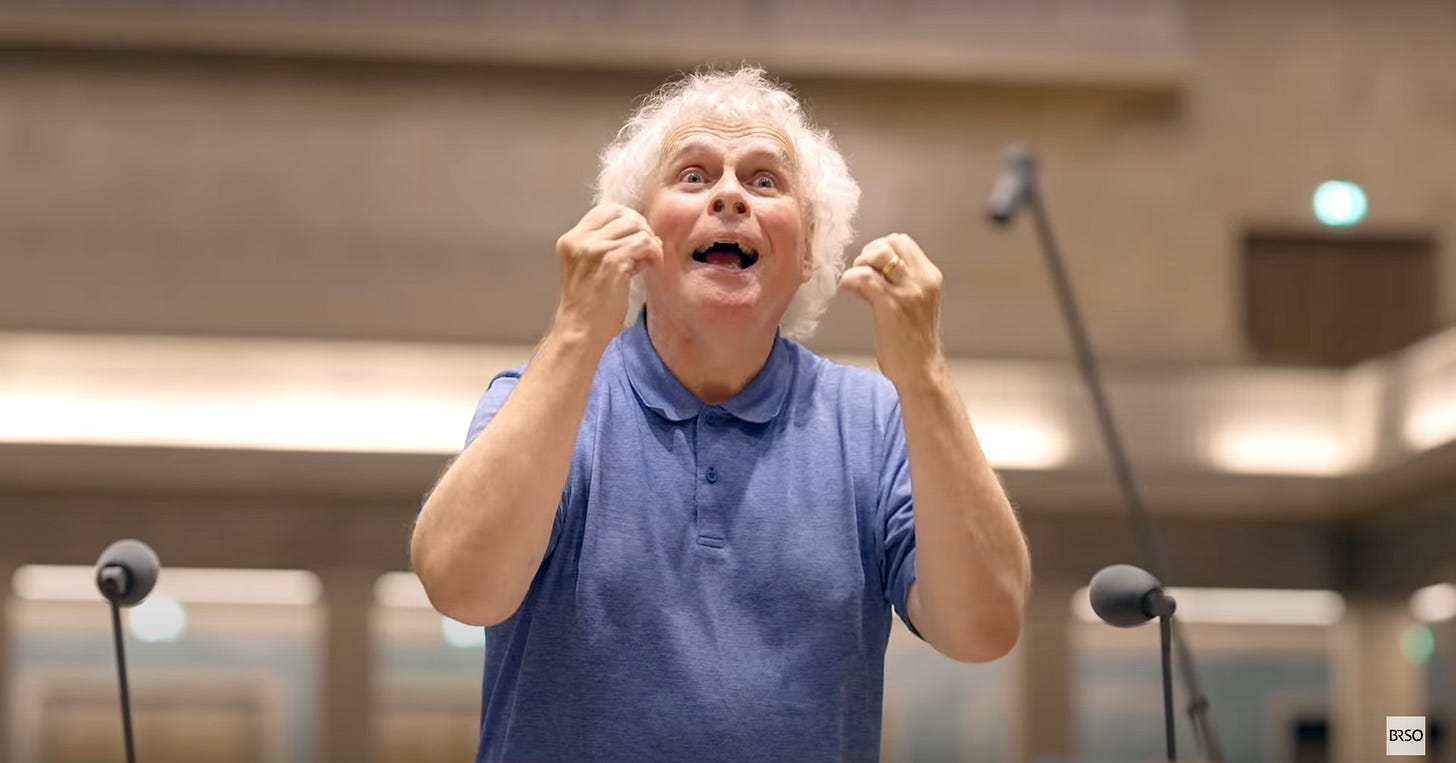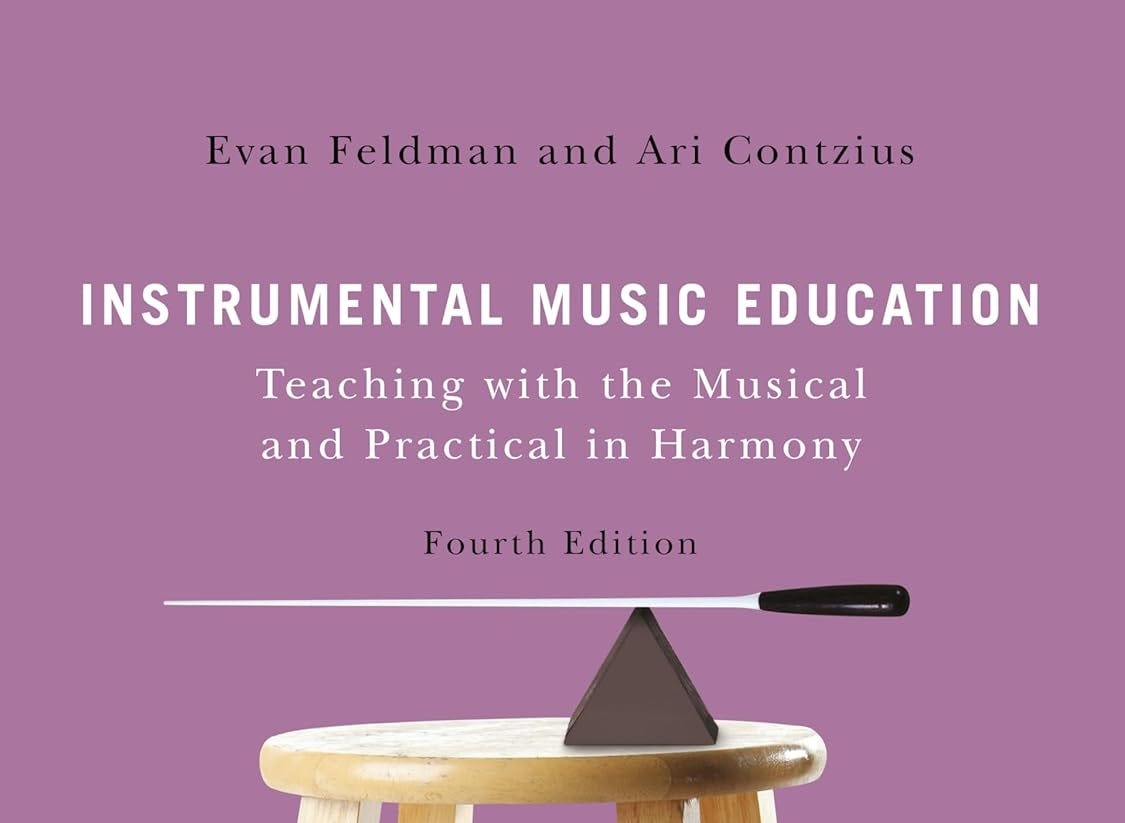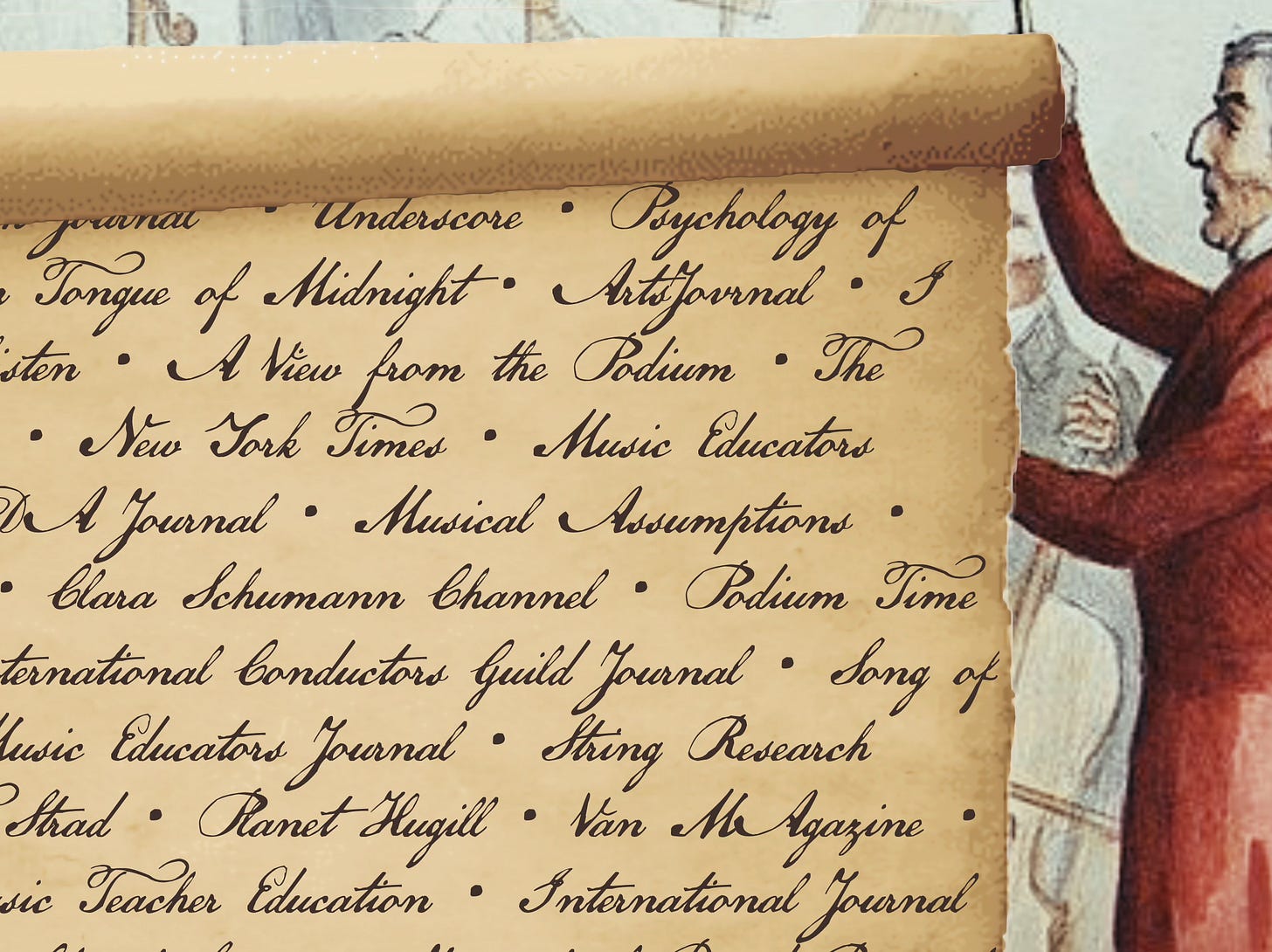Welcome to The Art of Rehearsal — This issue highlights a new edition of a great book on instrumental music education, one that even experienced teachers could benefit from. I’ll offer a few points of connection between music education, the work of conductor Simon Rattle, and an emphasis on choral music, experienced through a couple of choral-orchestral works by Haydn.
Each facet of the music world (chamber music, professional conducting, music education, etc.) and each genre has a great deal to teach one another about music-making and the art and craft of rehearsal, and I’m not alone in thinking so. Many threads link all of these different contexts together and we’ll explore a few of them here.
If you’re new, check out this overview. For the first issue sent out in August, read here.
NB: Thanks for your helpful survey feedback. I’ve made some adjustments to reflect what I learned. This is a two-way conversation - I’d be so grateful if you’d fill out the survey today so that I can continue to try to make this newsletter something valuable for you. More feedback options and opportunities to contribute to the newsletter can be found at the bottom. Thanks again. - JS
Contents:
TTT • Quote from the GOAT • New in Music Education • Rehearsal Roundup • Face the Music
Tactics and Techniques to Try
Technique: Try to intelligently move beyond clinical instructions like merely asking for a crescendo, or “more horns in measure 87.” Instead, aim for a way to motivate the phrase. What does the music mean here? Why do we need more/less/shorter/longer/etc.?
Pondering the deeper questions might sound like a lovely thought, but some might also find it highly impractical. “I have too many fires to put out to sit and ponder the deeper meaning during rehearsal,” some might contend. If so, then I have good news: you actually save time and build musician motivation with why.
Don’t take my word for it: As Charles Duhigg writes: “If you can link something hard to a choice you care about, it makes the task easier…. Make a chore into a meaningful decision, and self-motivation will emerge.” (Emphasis mine.)
The science is in: Above, Duhigg is relating a challenging Marine Corps training exercise (a rehearsal in every sense!) to an emerging picture of the psychology of motivation. Seeking deeper meaning should be a goal in itself, but when the clock is literally ticking, it is a comfort to know that when we give musicians reasons, we actually improve results and save time.
…but don’t re-invent the wheel: the best and most valuable reasoning comes directly from the composer’s score. More on score prep here.
…and keep it tight: No lectures necessary. “Why” is a question that can be answered succinctly: “Could the horns ring out in measure 87? Take us to the Alps!” Enough said.
A Quote from the GOAT
“The more you put into yourself, the more you will be able to give back to your students and to the music.”
— Simon Rattle (quoted by Richard Floyd)
Rattle is well known as a tremendous advocate for music education in Europe. He once said that all the best musicians ought to become teachers and in charge of educating young musicians. I think this is spot on.
On a similar note: Michael Tilson Thomas (MTT), who recently turned 80, credits his public middle school orchestra experience as the starting line of his conducting career. It’s pretty great to see him walking around the Walter Reed Middle School Band Hall with cubby holes and bass drums and all the rest. Take a look (one minute). Or, for a great three-minute clip of MTT rehearsing Mahler 3 with young musicians in the Swiss Alps, go here.
This is a two-way street: Marla Ringel is the Asst. Director of Choral Studies at TCU - she’s been studying the rehearsal preparation habits of elite choral conductors (link). You can see her leading orchestra and chorus in Haydn here or choir only in music by Reena Esmail here.
Ringel likens professional conducting to andragogy - adult education, placing all of rehearsal on a continuum of education from young children to retirees at all skill levels. She’s not the first to notice these connections:
Sociologist Jamie Kennedy reciprocates, investigating learning in professional orchestras. In her outsider-insider view shows significant overlap between these two worlds core traits or rehearsal from the musician view: awareness, communication, evaluation of performance, the formation of playing intentions, and following rehearsal protocols.
Jennifer Whitaker at UNC actually calls rehearsal instructions“teaching behaviors.” Cornelia Yarborough calls Robert Shaw’s work “teaching artistry.”
Making the Point: Music teachers, professional conductors, and chamber musicians from every musical genre, and every level of experience can benefit from think about what works and what doesn’t when time is short and the musical stakes are high. High-level musical decision-making and craftsmanship in teaching are two sides of the same coin.
New in Music Education
When many of us went through our training, there truly was no textbook for leading an ensemble in a school setting. While there are several band director texts out there, one pair of authors have tried to tackle all of instrumental music education in a single text. Evan Feldman and Ari Contzius produced 544 (very large) pages of refined wisdom in Instrumental Music Education: Teaching with the Musical and Practical in Harmony now in its 4th edition. I have used the third with my undergraduate music ed students and frequently turn to its chapter on rehearsal technique - one of the best documents on the topic that I have found. That chapter alone is worth the sticker price. Available here.
I’ve written about this book’s guidance on rehearsal technique a few times - check out this rehearsal essay: “Knowing When to Stop and Fix.”
Feldman also put out a free course on rehearsal on Coursera - If you do a bike or elliptical sometimes and you’ve run out of good shows to stream, it’s worth a look.
Rehearsal Roundup
Recent Essays and Discoveries
“Community Orchestra: How to Keep or Lose Members” - Louise Jones at Violinist.com. Recent essay asks vital questions - the comments are a full of wise and candid feedback about keeping rehearsals organized and on track in order to keep members attentive and on time.
There’s no clearer example of andragogy than a community orchestra, civic band, or church choir. We have a lot to learn from one another.
Simon Rattle gave an interview as he returned to the UK for his first Proms performance since taking over as music director of the Bavarian Radio Symphony. (Interview Excerpts [Print] in the Times of London • Full Interview [Audio] on BBC 3)
He answers some revealing questions with humility, describing his own struggles with confidence during his time in Berlin, particularly around eye contact.
👀 Eye contact is consistently important for Rattle in rehearsal. Daniel Keith O'Bryant interviewed Rattle in 2006 and published that interview in CODA Journal in 2020. “I had to really beg them to look at me in the eye, because Karajan conducted with his eyes closed, all the time! And that still carried though Claudio’s era. You have to actually persuade them that eye contact is also very important.” (You can find O’Bryant here if you would like the article.)
A Student’s Perspective: “Surviving—and Thriving in—My First Orchestra Cycle” at the Juilliard Blog.
Mark Laycock provides his rehearsal expertise in his “Rehearsal Guide: Leyden’s Serenade for String Orchestra” in the ASTA journal.
From me:
“Blogroll 2024” - Surfacing the musical jewels of the Internet. It’s not all a total sewer if you know where to look…
“I Was in Band” - It’s not every day that you see a U.S. Presidential candidate show up to band rehearsal.
One more listed just below. You can find them all at Conductor’s Notebook. Or subscribe via RSS.
Face the Music
Rehearsal video from around the web.
Simon Rattle rehearses the Bavarian Radio Symphony Orchestra and Chorus in Haydn’s Creation. Note how the eyes come up again and again for him.
“Und eine neue Welt.” From Haydn, Die Schöpfung (The Creation) - Part I, No. 2 (Score)
I break one chunk of this clip down in minute detail here, and tee up an important debate in choral conducting: “Tactic Tuesday - Big Eyes”
Pro-Tip: Skip to 3:31 for about three minutes of work on a brief passage.
Diction isn’t just for singers: Gary Lewis frequently exhorts his orchestras to tend to the “diction” in a phrase or short passage. This of course relates to articulation, but seems to encompass a larger spirit and a deeper sense of communication and utterance.
As Rattle has said elsewhere, we have to ask not just what the music says but what it means. For singers, the text helps point in the direction of that meaning, but for instrumentalists, “diction” helps orient us around meaning - to go somewhere beyond “notes’n rhythms.”
Jarret Lipman puts meaning into practice with his bands, asking them to vocalize frequently. Check out this lovely rehearsal with the Claudia Taylor Johnson High School Wind Ensemble.
How to find the why: MTT discusses the what, why, and how of it all. To me, this is as essential as telling your group what measure number to find.
Let’s Talk
The only way I can make this newsletter worth your time is with your help. Here’s this month’s very short survey. I’d be grateful for your feedback. Thank you!
Also….
… please feel free to comment when reading on Substack. I’ll be checking in.
If you like what you’ve read, consider forwarding it to a colleague, adding your own “note” on substack, sharing the link on social media, or adding a link to the Reddit, Facebook Group, or website of your choice. I use the handle @jordanconductor on virtually every website if you’d like to converse.
And I’d love to feature you and your groups in future newsletters. Here’s how:
Send comments on what you read or watched and resonated with from the newsletter (or suggest something else you found. Other subscribers would be enriched by your two cents.
Reply to this email with your comments and/or additional links, and I’ll add it to my folder as I consider content for the next newsletter. The feedback might be critical of an idea - that’s helpful too.
Send something you tried in rehearsal - describe it as best as you can - what was the result? (Fails are appreciated just as much as wins.)
Send a video clip of some of your work in rehearsal.
I’d love to make the newsletter cover photo reflect its subscribers - send me a photo (or a video screenshot) of you working in rehearsal.
Any time I can find a way to fit your contributions into a subsequent newsletter or on the blog, I will.







